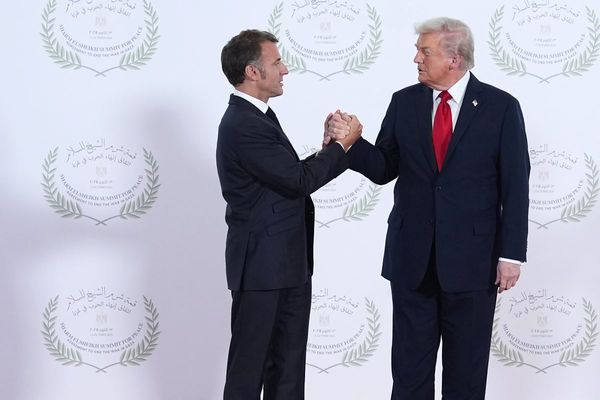
For far too long, public health research has either ruled out strong evidence or suggested mixed results for the impact of media messaging on the behaviour change required to tackle several health problems.
But when the National Institute of Health and Family Welfare’s journal tries to bolster a case for Prime Minister Narendra Modi’s Mann Ki Baat, all paradigm shifts are possible. It may not matter if the evidence is not entirely convincing and the methodology ostensibly flawed.
The latest edition of Health and Population – a quarterly journal of the institute which operates under the Union health ministry – has tried to establish the positive impact of Mann Ki Baat on several health programmes. It claims to offer research findings to suggest that the PM’s broadcast, which completed nine years this month, bridged the immunisation gap, tackled Covid vaccine hesitancy, and gave a fillip to organ donation and transplantation as well as the tuberculosis and kala-azar elimination programmes.
“We welcome you to this edition of the Health and Population: Perspectives and Issues journal dedicated to the profound and cherished Indian radio programme- Mann Ki Baat,” reads the foreword by the editorial team in the edition for April to June. “In the pages of this issue, you will find a rich tapestry of perspectives, reflections and insights inspired by the profound conversations sparked by Mann Ki Baat focused on the health sector.”
Papers in the journal “represent the opinion of the respective author(s) and don’t reflect the views and policies of the institute”, it states, on the second page, before the table of contents. Two of the papers, on the immunisation gap and Covid vaccine hesitancy, are by the health ministry’s immunisation department.
Mission Indradhanush, with one paragraph
The chapter that deals with the “role of Mann Ki Baat in bridging the immunisation gap”, however, only mentions the broadcast once.
Mission Indradhanush was launched in December 2014 by then Union health minister and sought to achieve 90 percent full immunisation coverage for children by 2020, but it is still far behind target – according to NHFS 5 data, only 77 percent children have been completely immunised across the country. This is despite nearly four decades of government immunisation projects.
“Narendra Modi captured the essence of Mission Indradhanush in his Mann ki Baat on 30 October 2016 highlighting the significance of vaccination of every child and lauded that the Mission Indradhanush programme is striving to vaccinate every left-out child with the vaccine doses missed during routine immunisation. Never before a Prime Minister had given a clarion call to ensure that no child suffers from Vaccine Preventable Disease (VPD). The visibility of the programme advocated by the topmost leadership through Mann Ki Baat, not only created awareness among the population about the vaccination programme and its health benefits but also stamped the credibility of Universal Immunisation Programme.”
The following paragraphs and tables list out a methodology and data to argue that the immunisation programme has received a boost. But the PM is given credit, not Mann Ki Baat.
“Continuous monitoring of the programme by the leader of the country ensured sincere supervision of the activities for effective implementation. India’s achievements from MI set a global example of strong political will and robust operational and demand generation strategies to be replicated or adapted to eliminate life-threatening vaccine-preventable diseases, even in the most challenging areas of the world.”
Notably, the infographic suggests improvement in immunisation numbers even in 2015, much before the PM addressed the subject in his Mann Ki Baat in 2016.
Impact on TB programme, but with administrative commitment
The next chapter is titled “progress of India’s quest to eradicate TB: impact of prime minister of India’s address in Mann Ki Baat on AIR”. It mentions that the PM spoke about TB on three broadcasts – on March 25, 2018, September 25 and December 25 last year.
To assess the impact, it states that retrospective analysis was conducted using various data sources, “including the National TB Elimination Programme (NTEP) on the coverage of various services for TB patient care and mobilisation of community. Information was also collected from social media and citizen engagement platforms including Twitter, Facebook, Instagram, TB Aarogya Saathi application, on people’s reach and engagement.”
But the details below suggest that more than community engagement, Mann Ki Baat complimented greater efforts by the government. Be it the launch of the Pradhan Mantri TB Mukt Bharat Abhiyan, or the campaign to enlist Nikshay Mitra volunteers.
The social media engagement data pertaining to these campaigns shows a significant rise only from January this year. The study doesn’t take into account how much of this engagement was organic instead of being driven by government handles.
Data enclosed in the journal does show a rise in the number of registrations of Nikshay Mitras but it discounts the government push at the central, state and local level as it tries to attribute this to Mann Ki Baat.
The limitations note that “the current study attempts to measure the association and impact of MKB”, but “quantitative segregated measurement of impact of the MKB is intricate, as it is one of the many initiatives that has been taken up by the government.”
The conclusion is assertive.
“His appeal to work together and contribute to the causes motivates people to come forward and support the TB patients. Overall, it shows an effective public health model of mass movement generation for collaboration and cooperation for building a healthy country.”
Covid vaccine hesitancy, with help from media
Mann Ki Baat spoke of vaccine hesitancy on June 27, 2021.
“The study analysed the data from the CoWIN portal to identify the trends or patterns in vaccine coverage before and after the Mann Ki Baat address to make correlations, if any. Statistical analysis has been undertaken to identify the pattern of vaccine coverage over a timeline. The study has also done content analysis of PM Modi's Mann Ki Baat address to identify key messages and themes related to vaccine hesitancy. The literature review has focused on the existing studies that have examined the content in MKB from various perspectives.”
It relies on the media multiplier effect to quantify the impact, suggesting that the vast media coverage of the prime minister’s remarks about vaccines must have helped dispel doubts.
“When the Prime Minister went for inoculation, the television channels covered it which can be deconstructed by people that when a PM could do, why wouldn’t they also do. When he spoke about vaccine hesitancy in Mann Ki Baat, he invoked his personal example and that of his late centenarian mother to convince an average vaccine-hesitant person to shun hesitancy, believe in scientists and avoid believing in rumour mongers.”
The trend line suggests a rise in vaccine coverage even before the PM specifically addressed vaccine hesitancy on June 27, 2021.
Organ transplantation survey, with 2,000 respondents
This chapter is titled the “impact of 99th edition of Mann Ki Baat on organ donation and transplantation by Prime Minister Modi: A cross-sectional survey in India”.
“The basic objective of this study is to assess the impact of the single edition i.e. the 99th episode of the Prime Minister’s monthly radio talk Mann Ki Baat on the National Broadcaster, the All India Radio on Organ Donation and Transplantation on 26 March 2023. The study also measures the impact of Mann Ki Baat on the knowledge, awareness, and practices in organ donation among the medical masses.”
The impact was measured through a survey circulated among 2,000 respondents, including patients and health workers. The general population and relatives of patients formed a small part of the respondents.
“To the question on what should be the way forward of promoting organ donation awareness drive, majority of them selected a holistic response of ‘all the above’ while 10 to 19.9 percent of the respondents chose more episodes of Mann Ki Baat.”
“On the question, ‘Would PM Modi’s Mann Ki Baat on organ donation be useful as an IEC (information, education and communication) activity for donor conversion in counselling?’, most of the medical staff selected the ‘yes’ option in English (71.2 percent) and Hindi (72.1 percent) language. 41.9 percent to 77.4 percent people selected a positive response to the question, ‘Has there been an increase number of query on organ donation after Mann Ki Baat by PM Modi on organ donation?’”
It suggests a change in attitude but not necessarily practices.
Kala-azar elimination, more to do with administrative measures
The last chapter is titled “PM’s Mann Ki Baat propels India to the point of achieving Kala-azar elimination: Impact assessment of the key strategies to overcome the last mile challenges”.
The PM mentioned kala-azar in December, addressing vector control and people’s participation.
“This study aims at assessing the impact of the monthly radio programme Mann Ki Baat on kala-azar through Ratri Chaupal, an audio-visual aided campaign to educate the rural communities on kala-azar which is being carried out in the high-endemic district of Pakur in Jharkhand. Since its inception in December 2022, the campaign had covered 36 villages to date, achieving a reach of 5,830 people in attendance, with an average of 150 audiences per show.”
For the first objective, this study conducted an interview with 33 people from Bandadih village.
“This brief survey via an interview of the community reflected a high degree of awareness and acceptance of the community brought about by Mann Ki Baat on the different facets of KA, be it clinical manifestations, prompt diagnosis and treatment, or vector control interventions.”
It acknowledges the limitations, that subjective assessment through interviews might have inserted “subjective bias” in the study, and that a thorough in-depth interview could have been planned to substantiate evidence through qualitative research.
But a secondary objective is added to introduce a major factor – the effect of revamped strategies such as clay-plastering of thatched homes, monitor, enhanced local governance – to establish impact.
“When data on the incidence of KA cases were assessed for reflecting the overall impact of Mann Ki Baat on the Kala-azar elimination programme, and compared in terms of pre and post-Mann Ki Baat; it was observed that there is an 83.88 per cent reduction in the number of KA cases from December 2022 (a total of 881 KA cases) to March 2023 (142 KA cases).”
Newslaundry is a reader-supported, ad-free, independent news outlet based out of New Delhi. Support their journalism, here.







